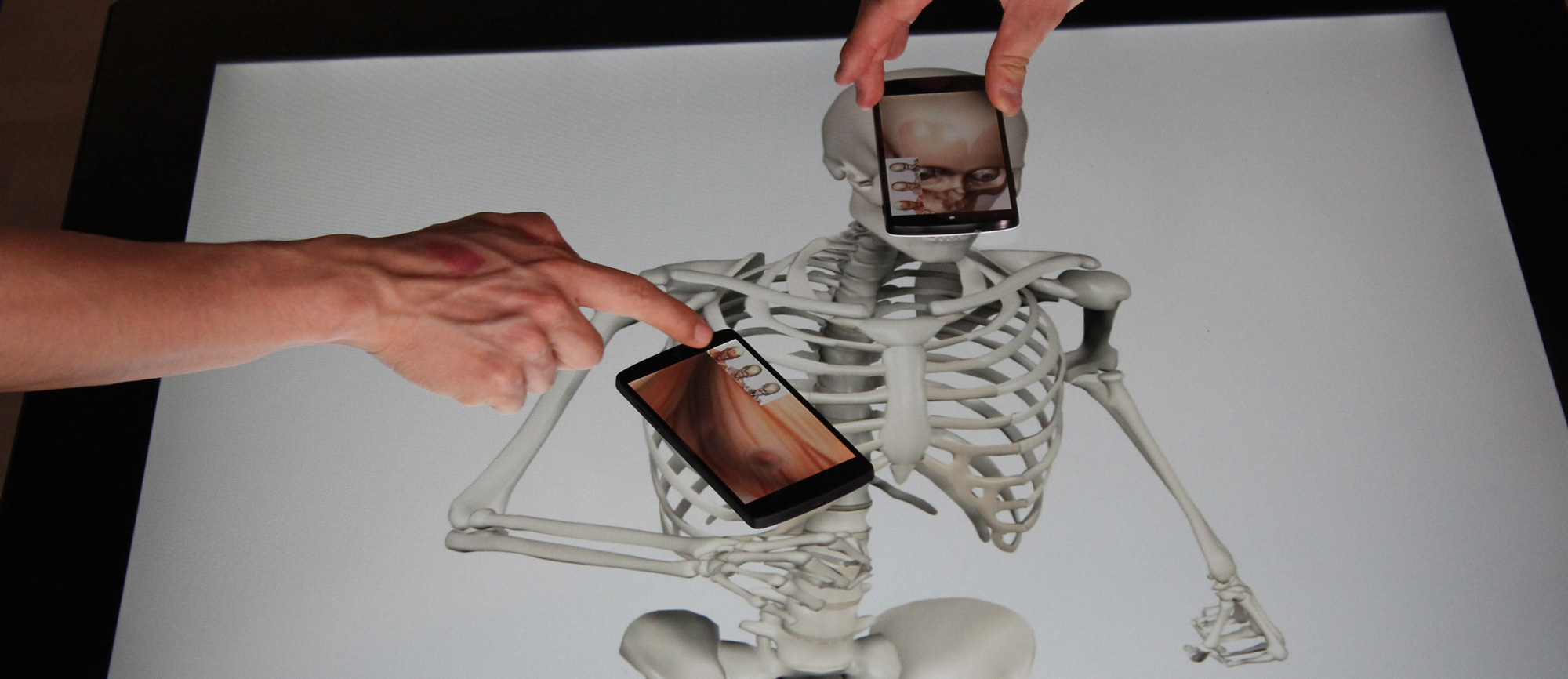Pairing Devices Is About to Get a Lot Easier

Imagine being able to set your phone on the screen of your tablet and transfer files by dragging and dropping them between the two screens.
Carnegie Mellon University researchers have built a system called CapCam that allows users to pair mobile devices with touch screens by pressing them together. Touch screens can track devices as they move across their surface, while the devices extract data by reading a flashing color pattern.
CapCam is meant to be an alternative to manual pairing technologies like Bluetooth, without the specific hardware requirements of options like NFC (the technology behind Apple Pay). As long as a relatively modern mobile device has a camera, it should be able to be paired with another touch-screen device via CapCam. That opens up easily pairing phones and tablets with public touch screens, or transferring data between two phones by touching them together.
Pairing devices with CapCam begins by pressing a mobile device against a touch-screen device. Equipped with CapCam’s software, the touch screen senses the shape and location of the device. It begins flashing a unique color pattern underneath the device, which contains pairing instructions. The mobile device, which also must have CapCam’s software installed, uses its camera to see the color pattern and establish a wireless connection. It’s possible to have multiple devices paired at once, and you can still interact with the screens with your hands.
The system could come in handy in spaces like malls, where visitors commonly find information at large public kiosks. Carnegie Mellon human-computer interaction researcher Robert Xiao used a subway station as an example; New York has digital screens where visitors can pull up a recommended itinerary for their ride.
"If you have CapCam, you just press your phone to the screen and the itinerary you picked out is downloaded to your phone and is in Google Maps,” Xiao says.
A video produced by Carnegie Mellon shows CapCam used to augment a mobile phone’s screen. People place a phone on a large touch screen, where a virtual keyboard pops up beside the phone. They drag files between the devices and press a phone against an image to transfer it. They also use phones as paddles to play digital air hockey on a large touch screen.
Researchers have previously used flashing lights to pair devices and used touch screens to track other devices, but CapCam is unique in its method for combining the two techniques. The Carnegie Mellon team is now interested in finding a commercial partner who wants to license the technology. It should work on many existing devices, so it’s possible it would be distributed as a downloadable app.
Keep Reading
Most Popular
Large language models can do jaw-dropping things. But nobody knows exactly why.
And that's a problem. Figuring it out is one of the biggest scientific puzzles of our time and a crucial step towards controlling more powerful future models.
The problem with plug-in hybrids? Their drivers.
Plug-in hybrids are often sold as a transition to EVs, but new data from Europe shows we’re still underestimating the emissions they produce.
Google DeepMind’s new generative model makes Super Mario–like games from scratch
Genie learns how to control games by watching hours and hours of video. It could help train next-gen robots too.
How scientists traced a mysterious covid case back to six toilets
When wastewater surveillance turns into a hunt for a single infected individual, the ethics get tricky.
Stay connected
Get the latest updates from
MIT Technology Review
Discover special offers, top stories, upcoming events, and more.